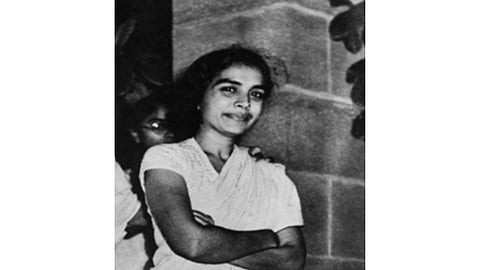References:
1. Kalantri, SP. “Celebrating the Legacy of Dr. Sushila Nayar and the Roots of MGIMS!” Matter-of-Fact, November 11, 2023. Accessed May 3, 2025. https://sp.kalantri.co.in/blog/2023/11/11/celebrating-the-legacy-of-dr-sushila-nayar-and-the-roots-of-mgims/.
2. Kalantri, SP. “Dr Sushila Nayar.” Matter-of-Fact, December 1, 2001. Accessed May 3, 2025. https://sp.kalantri.co.in/blog/2001/12/01/dr-sushila-nayar-2/.
3. Barua, Ananya. “Meet Gandhi's Doc Who Spent Her Life Giving Medical Care to the Poor.” The Better India, July 1, 2019. Accessed May 3, 2025. https://thebetterindia.com/187641/sushila-nayar-doctor-mahatma-gandhi-woman-health-minister-india/.
4. Mahatma Gandhi Institute of Medical Sciences. “MGIMS Pays Tribute to Dr Sushila Nayar on Her 17th Death Anniversary.” MGIMS, January 3, 2018. Accessed May 3, 2025. https://www.mgims.ac.in/index.php/component/easyblog/266-mgims-pays-tribute-to-dr-sushila-nayar?Itemid=1.
5. Whastic. “Sushila Nayyar: The Doctor of a Republic.” Whastic Podcasts. Accessed May 3, 2025. https://podcasts.whastic.com/podcast/sushila-nayyar-the-doctor-of-a-republic.
6. Kalantri, SP. “Dr Sushila Nayar.” Matter-of-Fact, December 26, 2017. Accessed May 3, 2025. https://sp.kalantri.co.in/blog/2017/12/26/dr-sushila-nayar/.
7. Kalantri, SP. “From Courtrooms to Clinics: The MGIMS Rural Posting Fight.” Matter-of-Fact, April 27, 2025. Accessed May 3, 2025. https://sp.kalantri.co.in/blog/2025/04/27/from-courtrooms-to-clinics-the-mgims-rural-posting-fight/.
8. National Center for Biotechnology Information. “From Sevagram to National Health Policy: Dr. Sushila Nayar’s Contributions to Rural Healthcare and Medical Education in India.” PubMed Central. Accessed May 3, 2025. https://pmc.ncbi.nlm.nih.gov/articles/PMC11745985/.
By Dr. Theresa Lily Thomas, BDS
MSM


